Creating and implementing social media marketing strategies is more important for startups now than ever before and creating the right strategy can make or break your ability to succeed with your startup.
With social media network sizes in the billions of users, we have a great opportunity to capture the attention of consumers, businesses, startups, investors, brokers, and influencers. That’s why this post shares 14 proven startup social media marketing strategies that you can use on nearly any social media network.
In 2018, a study by Infusionsoft found that 71% of businesses are doing social media marketing to acquire new customers. So if you’re not doing social media marketing for your business, then you’re leaving money on the table.
That’s why I went in-depth into sharing proven startup marketing strategies via social media marketing which work across most of the major social media platforms like Facebook, LinkedIn, Twitter, Google+, and Instagram. They’ll not only increase your social media presence, but create an inbound marketing strategy that will bring you more traffic, leads, and sales.
If you want to learn how to market your startup, you implement these 14 social media marketing strategies and you stick with them, then I guarantee you that you’ll grow quite nicely.
Don’t miss #14 – I saved the best for last!
1) Develop a Community of Supporters by Building Trust With Them
In order to gain trust, you are going to have to be consistent with posting on social media with content that’s helpful to your target audience. By doing this, you’ll start to be recognized as an expert in your niche.
Consistency means posting daily. Don’t give up if you don’t see immediate results in the beginning!
Consistency is the key to your success.
Small efforts by posting daily = big wins over the long-term because social media has a compounding effect like interest does with money. The more you share, the more traffic you’ll get over time.
Building trust is really important because when you’re selling your startup’s product or service as a solution to a problem of theirs, they want to know and trust that you know what you’re doing.
When you post, you’ll want to only post in and places where they gather because you don’t want to market to the wrong people.
Give them content from trusted sources and combine your content in the mix.
Once you consistently post both curated and original content, you’ll start to attract people who become devoted followers of your startup. You’ll see more info about this in the next section regarding content ratios of original and curated content.
And you know what?
They’ll start to like, comment, and/or share the content you post!
Then, you can reply back to people who engage with you, thank them if they share your content or give you compliments, and engage in conversations with them.
It will make you and your startup look human (that’s a good thing) and you’ll keep them as followers who will engage with you on social media.
If you can build a relationship with these individuals who follow your startup and engage with you, then a healthy relationship with them could mean a sale for your startup because they’ll trust you. However, remember that you want to be genuine through your relationship and not be a shark trying to shove your product down their throat.
Just talk to them like you would talk to a friend, except you can talk about your businesses and whatnot instead of TV, movies, or whatever.
This is when you start developing friendships that become a community. And eventually, if you’re not already an influencer, these efforts will make you an influencer in your industry.
Important Key Performance Indicators: Likes or favorites, comments, retweets, shares, and clicks on your links.
2) Stick to a Content Ratio for Your Startup Marketing
Adhere to either a 4:1 content ratio (80% non-promotional/20% promotional) or a 30/60/10 ratio (30% your content/60% curated/10% promotional) for your startup marketing on social media.
Why is this important?
It’s important because it mixes things up so you’re not doing hard sells all the time and not just promoting yourself.
When you promote your company and only your company, it looks self-centered and it often lacks variety.
A content ratio allows you to provide value to your audience with multiple types of content they’d be interested in.
To help you get a better picture of what to share, let’s think of the different types of content you can share.
Types of Content to Share on Social Media
- Videos
- Podcast episodes or podcasts in general
- How-to guides
- Posts
- Checklists
- Templates
- Lists
- Infographics
- Quotes
- Stories
- Memes
- Etc.
By sharing a variety of content, you keep things fresh and your content marketing strategy doesn’t get stale easily. That’s why it helps by having a ratio.
If you have all original content to share, that’s amazing. Go you!
But if you don’t have all original content to share, then that’s okay too.
You can create content pretty easily, especially if it’s video and you can become comfortable in front of a camera or you are already.
They don’t have to be long videos — just a few minutes talking about a topic and why it’s so important.
Video would be a great boost for your startup marketing strategy. It’s literally the most engaging form of content.
You can find content from a number of different places which will be mentioned later in this post, so keep on reading!
Additionally, incorporating FlexClip into your content creation process can further enhance the visual appeal and effectiveness of your videos.
Important Key Performance Indicators: Likes or favorites, comments, retweets, shares, and clicks on your links.
3) Plan Ahead by Automating Your Posts
Automate your marketing with social media management services. It makes your marketing so much easier when you can schedule a bulk of your messages at once.
This allows you to focus on other parts of social media marketing and customer acquisition that rely more on interactions with users on each platform.
Three top social media automation services are:
1) Hootsuite
It offers an awesome free option that allows you to connect up to 3 social media accounts and schedule your tweets as far in advance as you like.
It’s one of the best free options for a social media marketing management service out there.
The first paid option allows you to connect up to 10 social profiles, and you can even get a free 30-day trial.
2) Buffer
You can connect up to one social profile per platform for free and allows you to schedule up to 10 posts per social profile in advance.
Their first paid option allows you to connect up to 10 social profiles, allows you to schedule up to 100 posts per social profile in advance, and more.
However, you only have access to the calendar for scheduling with the paid options.
3) Lately
Lately is an all-in-one social media management tool which I happen to love (I’m also a customer) and I think it will help you with your startup’s marketing strategy.
This great social media management tool allows you to publish to multiple channels, has an automatic social post generator which is absolutely kickass, a bulk scheduler for scheduling your startup’s social media posts, basic analytics, and a file manager.
Using their autogenerator, just one of my blog posts gave me 100 posts that I could post on four different channels. While they need some editing after being generated, it still saves me a ton of time and can bring me a better ROI than making my own posts.
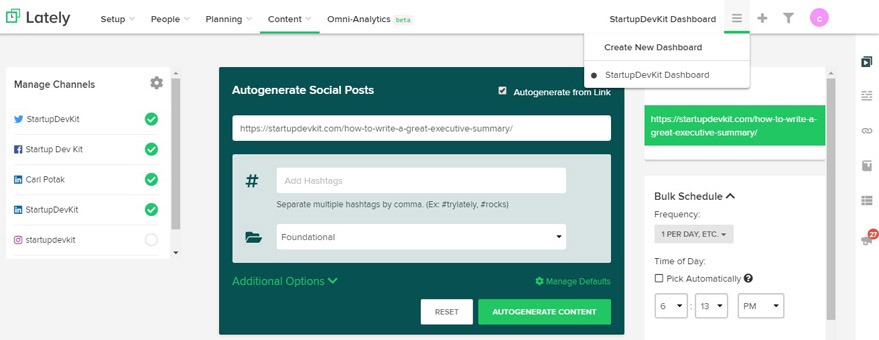
It starts at $49/mo, which is very fair considering all the features you get and when you factor in higher costs from competitors.
They also have two other plans with even more features. Check them out!
Important Key Performance Indicators: Likes or favorites, comments, retweets, shares, and clicks on your links.
Most important KPI: Link clicks
4) Create a Content Calendar to Make and Market Content on Social Media
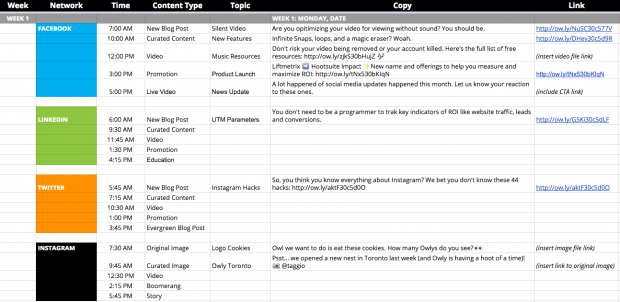
Plan the content you’ll be creating 1 week, 2 weeks, or even a month ahead.
Hootsuite suggests you create the spreadsheet to have columns for the: week, network, time, content type, topic, copy, and link.
The more you plan ahead, the easier it will be to create new content on a consistent basis.
This will improve your reach and efficiency ten-fold.
You could do this effectively either on a spreadsheet or through a digital calendar.
But what content are you going to put in your calendar? See below.
4 Ways to Find Content to Schedule in Your Social Media Calendar for Posts
1) Twitter (now, X)
If you’re on Twitter and you’re active on it, then you’re in luck because you don’t have to start from scratch.
If you’re not, then you should sign up because it’s a valuable way to connect with potential and existing customers, build relationships with influencers, and brand yourself and your company.
And, your audience will often like it when you share other highly popular and shared content. Look for posts of that nature and either share extremely similar content, or copy what was shared.
It’s helpful to know that the success of the content being posted on your account will be relative to the amount of active followers with similar interests, as they are correlated.
2) Find Top-Shared Content Through BuzzSumo
Buzzsumo is an excellent tool for your startup marketing. It’s a website which aggregates the top shared content across the major social media platforms and shows you how many shares each post was shared for each network. There are advanced filters, you can use and quite a few other large aspects of their platform.
You can have a free taste of what it can do without paying by seeing only the first page of your search results, but the ability to view any page after the first requires a paid subscription.
The paid subscription starts out at $119/month.
3) Share Your Own Content as Part of Your GTM Strategy or Startup Marketing Strategy
If you already have your own content, then I hope you’re marketing it!
It won’t do anybody any good just sitting on your site or YouTube channel if it’s not being consumed.
Show it to the world!
This is especially true if you are doing product-led marketing, where you constantly share aspects of your product or service on social media.
You can market:
- Features
- Benefits of your product
- New content
- Your content in general, talking about why it’s there and why it’s important
- Success stories from your growth
- Success stories or testimonials from your customers
- Blog posts
- New UI and UX enhancements
- Etc.
Just remember to share your content using the following formula in this order: The content title, then the link, then who it’s from (brand and/or author), then relevant hashtags.
Depending on character limits on the platform, you can also add a small description of why you wrote that content before you even post the content title. I’ve tried this tactic and it works very well.
5) Stream Live Videos on Social Media or Create Videos and Post Them
Include a short intro about the video to get their attention. Then get into the subject matter. Make it short and sweet with some helpful information on the topic.
Make sure you ask your viewers to like your video, subscribe to your YouTube channel, and leave a comment if they liked it or thought it was helpful.
If the video is about your product or service, then tell them how your product is going to make your customer’s lives better. Show your passion and enthusiasm for your product/service while doing this and you can even add a touch of comedy in it if it’s appropriate.
According to RenderFX, after visitors watch a video of your product/service, they’re 64% more likely to buy it online. Additionally, “when you use video on social, your audience is 10x more likely to engage with it.”
If you’d like to learn more about how to have an amazing video marketing strategy, I recommend you check out this resource by Lyfe Marketing called The Ultimate Guide to Video Content Marketing for Increased Engagement.
Most Important Key Performance Indicators: Video plays and landing page visits.
Important Key Performance Indicators: Likes or favorites, comments, retweets, shares.
6) Find & Share Helpful Videos
Videos get the best engagement on social media as long as the videos are relevant to your audience. By engagement, I mean likes, comments, and shares.
YouTube, Vimeo, and Inc 500 allow you to share videos from their platform to other social media platforms.
Video also helps you sell your startup’s product or service better than anything else. However, these types of videos are direct sales-based.
Try curating a bunch of videos first and adding them into an internal list of yours with links to the videos so you don’t have to go back to the video page itself to share it.
It’s good to do that because when you want to share them on social media and schedule social media marketing posts, you can easily have them on-hand and quickly write your posts.
One thing that you can do to curate your list of videos is finding your favorite and most relevant YouTube channels. Then subscribe to them and go back to them to source your video content.
The other way to find them is by simply typing in your keywords into the search bar.
Important Key Performance Indicators: Likes or favorites, comments, retweets, shares.
7) Publish Motivational or Inspirational Stories, or Startup Quotes
Startup quotes are one of the most searched keywords for our posts because people want to reap the wisdom from successful founders. People eat these up. Motivational images are shared at 10x the rate of normal social media posts, according to Jonathan Gunson, who has over 130,000 Twitter followers and is a major Twitter influencer.
Why can publishing quotes help you get more customers for your startup?
Well, what it does is it forms a more emotional bond with your followers, and it also creates more engagement with your content. Getting more engagement with your content allows the rest of your content to get noticed more. And more impressions and engagement equal more opportunities to get customers.
You can find quotes by simply doing Google searches or going to our post, 121 Startup Quotes From High-Level Founders and Leaders.
You can also create your own posts by using quotes from famous people who have said profound things. Motivational images also build up your social media profile as an influencer and make you look good.
However, you’ve got to use the right types of quotes for your audience because it’s all about catering to the desires and needs of your target audience. This can help lead more people to visit your profile, and, in turn, your website. It’s some great social media marketing material for startups.
Tell us, does this startup quote from Steve Jobs motivate or inspire you?
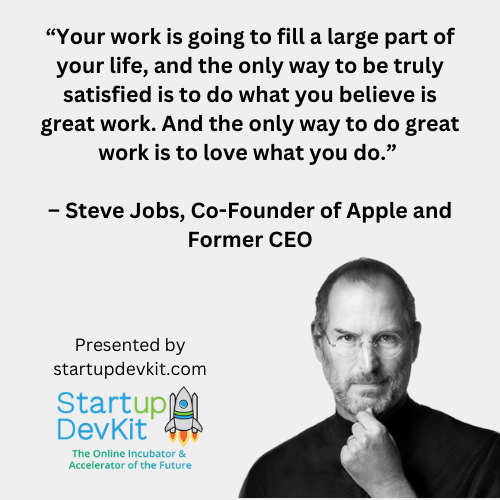
If you need a free vector art program, check out Inkscape. It’s not super user-friendly, but it can get the job done. If you have trouble figuring it out, check out some how-to videos on YouTube.
Since visual quotes are the best, using Canva, you can create your own quote/image combination — or with Adobe Photoshop &/or Illustrator. We use Canva due to its simplicity and use Photoshop on occasion.
Important Key Performance Indicators: Likes or favorites, comments, retweets, shares.
8) Write and Post Value-Filled Blog Posts
It’s best to create evergreen content, meaning content that doesn’t expire. Content that expires usually has a year or date within the name.
When you’re marketing blog posts, you’ll want to include:
- Perhaps a small description or a few thoughts about why you wrote it. They add a human touch to your marketing.
- The title of the post
- The link right after the title
- Hashtags of the relevant categories it belongs to
However, you can also write content that will not link to anywhere outside of the social media platform.
This is a tactic that will get your post more impressions on Facebook because the algorithms like it when you’re not linking to outside content.
And, this allows you to provide value straight from the social media marketing platform without people having to leave it.
On Twitter, you can write small lists which are helpful. But on Facebook and LinkedIn you can write significant amounts of content which will be shared with your network in an instant.
Do you want to learn how to create great content? Check out this post I wrote called The Definitive Guide To B2B Content Marketing.
Most Important Key Performance Indicators: Link clicks
Important Key Performance Indicators: Likes or favorites, comments, retweets, shares.
9) Share Podcasts From Industry-Leaders
Sharing podcast episodes which are relevant to your niche is a great way to add variety into your startup marketing strategy, especially if you’re creating your own podcasts.
Podcasts are all the craze right now. People love listening to them, especially during commutes and exercise.
To find podcasts that you might like, just type into Google your industry + podcast, and you’ll probably find a list of the best podcasts by industry leaders.
Share podcasts and episodes in the same way as discussed in the previous tip (#8).
These will help to cement yourself as someone who’s an industry insider.
In addition, sharing them will help you become a greater influence within the industry.
Important Key Performance Indicators: Likes or favorites, comments, retweets, shares.
10) Create Blog Post Snippets and Share
If you are looking to build up your social media following quickly, and don’t have your own content, then find some compelling content from a third party that will resonate with your target audience.
Then copy and paste the first paragraph or two onto the blog section of a new post on your website.
Then include a link to the original post after those few paragraphs you copied which should open the original post in a new window. This will bring traffic to your website, to the source website, and build up your social influence simultaneously. The blog post snippet tactic described here is utilized by GrowthHackers.com by Sean Ellis, and it’s responsible for most of its traffic because it acts as a referrer.
Just remember that your goal will be to get them to stay on your website or subscribe to your email list so that you can re-capture their attention and try to get them to buy from you.
Most Important Key Performance Indicators: Link clicks, likes or favorites, comments, retweets, shares.
11) Create and Share a Free E-Book
People love free e-books! Share a free e-book of yours on social media that’s relevant and helpful to your target audience.
Free e-books are a form of a lead-magnet because they draw in leads and thus, is a great startup marketing strategy. The power of sales is in your email list more than anywhere else.
You set up this lead magnet on your website by making a new page for it or by using a popup lead generation tool. Once you make the page, describe the e-book and what the readers will get from it. From there, you can take the link from that page and market it on social media as an e-book for people to download.
Doing so will increase or demonstrate your authority on the subject and bring you more email subscribers.
If you are going to write an e-book or any blog post for that matter, make sure you follow the following process to write it:
- Pick a topic you know well
- Research it to get data to support your content
- Create an outline using headings and subheadings
- Write your draft in MS Word or Google Docs
- Edit your draft
- Add images to supplement the text
- Use a design program like Adobe InDesign to do typesetting and make it more visually appealing OR use a service like Fiverr to find a designer to produce it.
- Once it’s completed, save it as a PDF from GDocs or Word
You can also copy and paste an entire previously written post into Google Docs and save it as a PDF and remarket it on social media as an e-book…as long as it’s authoritative and well-formatted.
And if you want to take it the next step further, you can do the same thing as described above and use it as a content upgrade so when people visit your post they can read it but also have the option of downloading that whole post as an e-book.
Once it’s ready to put out there, your post on social media might look something like this:
E-book name [Free E-Book] by your name via your company name – your link goes here #RelevantIndustryHashtag1 #IndustryHashtag2 #IndustryHashtag3
But don’t go nuts on the hashtags. It just looks needy and results in fewer interactions except on Instagram. It’s counter-intuitive – I know.
Make a call to action to download it for free from your website when users opt-in with their email address.
You can even pin it to your profile on Twitter, on Facebook, on your Facebook page, your Facebook Group, your LinkedIn profile, etc.
12) Recycle Your Existing Blog Posts to Share
Recycle your existing blog posts by turning them into videos, infographics, or podcasts. Repurposing content and marketing it is a killer tactic to breath new life into your social media marketing efforts.
When you do, you’ll have fresh content to share on social media and everyone’s on the hunt for fresh content. Moreover, having content in different formats gives you more content to market and a wider audience of people that will see it.
Below, you can learn more about repurposing your content into video.
13) Get Found on Social Media by Using Hashtags
This may seem simple, but hashtags increase the number of impressions you get on your social media posts because it categorizes any post that uses a hashtag to come up when searched for.
They are a great way to ensure your material is being shown to relevant audiences and a lot of companies forget to use them!
We use #StartupDevKit on a lot of our social media posts so that anyone who punches that hashtag in can see almost everything we’ve posted.
LinkedIn has a limit of 3 hashtags, but the rest allow for pretty much as many as you want, except for Twitter because there’s a character limit of 280 characters including spaces.
Use relevant hashtags to the topic you’re posting about. Witty hashtags only get seen by those who are already viewing the post.
Nobody searches for witty hashtags because they’re unique hashtags, so those posts with witty hashtags will, by default, get fewer impressions (views) unless it gets them really excited.
I suggest using one hashtag with your startup’s name and you can include that in most or all of your startup’s posts. The rest of your hashtags should be industry and categorically related.
14) Our CLMMPFS Social Media Marketing Formula
To build the most solid presence on social media for your startup, you need to cover the seven main bases below.
I created the CLMMPFS social media marketing formula, which is an acronym and a 360-degree strategy for social media marketing. It contains every major component of social media marketing and if you can perform all 7 of these tactics, then you’re going to be in great shape to get traffic and engagement.
We guarantee that this will yield dividends for your company.
Why? Because it activates every major aspect of the algorithms that social media companies use to promote your content to the right audience.
The CLMMPFS Social Media Marketing Formula Broken Down
Nearly every single social media platform has the following features built in. And because of that, they like it when you use all of their features. Makes sense, right? Furthermore, using those features will increase your visibility and their algorithm will start to rank you higher.
Here are some directions to optimize your time on social media networks
1) Define the number of people/profiles you will interact with. Between 30-60 people is a good range per session of social media activity. However, if you’re just starting out or have less time to put in, then start with easily attainable goals like 10 – 30 actions per item and then continually work your way up to doing more.
2) Search for a topic or keywords and find however many new profiles of people, companies, and target customers that you wanna interact with in one session.
3) Then open each profile in a new browser tab so you can do a social media engagement sprint.
Below is an acronym I created called the CLMMPFS social media marketing formula.
1) Commenting – This is the start of your relationship through engagement. Go through your news feed or profiles you pulled up and comment on 1-2 posts per person you engage with. Share your thoughts on their post(s) in the comments. This starts to get you on their radars. Only comment on people’s content who are within your buyer persona(s).
2) Listening then Liking – Find highly relevant posts, then like between 2 and 3 posts per person you interact with. The more relevant to your audience, the better.
3) Mentioning – Mentioning people in posts is a great way to engage your audience and the person’s audience.
Try these tactics:
1) Give them compliments and add relevant keywords and hashtags into the post so the network’s algorithm can show it to people who follow those topics.
2) Publicly mention someone and ask them a question. It can be a philosophical question, advice-related (asking for/giving advice), sharing your product/service, or inquiring about attending an event that you’re attending.
3) On several social networks, after people follow you, you can thank them for following them by mention several users at one time.
4) Messaging – Message people directly. Ask what they’re working on or say something nice about their startup. You can also share something relevant and helpful that you think would benefit them. Invite them to your community if you have one. But DON’T be spammy. Be genuine and try to create REAL relationships. One of the best ways to connect is doing a video chat with each other and learn each other and about any potential synergies.
See if they could be one of the following and guide the conversation from there:
1) Potential leads/customers
2) People who can possibly have a strategic relationship with you
3) A person who’s not personally interested but perhaps they can refer you to someone who is
4) Mutual supporters of each other, who may or may not be able to make referrals to each other’s products
5) A person who you may be interested in hiring or working with
5) Posting – Post any combination of text, pictures, and video. Make sure it’s something that provides value if you want likes, upvotes, shares, comments, etc.
Include several relevant hashtags when possible. If you have no active audience, then you won’t get noticeable engagement.
Use relevant hashtags to help you reach a wider audience of people.
Additionally, the more posts you can schedule in advance with automation tools, the larger your reach will usually get.
You can create many different types of posts:
1) Thank you for following us posts
2) Personal stories
3) Startup stories
4) Relevant videos
5) Curated content
6) Original content
7) Product/service posts
8) Sales/discounts
9) Support posts for friend’s products/services
10) Happy holiday posts
11) Questions to the community
12) Vlog posts
13) Looking for help, teammates, or feedback posts
14) Retweeting, sharing, or reposting people’s content
15) Wins (small and big) and difficulties
16) Quotes, especially picture quotes
6) Follow/Friend (or Connect) – Follow or friend X amount of people per social media sprint. The goal is pretty basic: follow/friend/connect with people who are in your target market or people who could potentially be good connections with you in which you can have a reciprocal relationship.
Create relationships with these people rather than having vanity followers. These are going to be the same people whose posts and pages you’re liking, following, and commenting on. Hopefully, they reciprocate.
7) Sharing – Share people’s content. They love that! Share X # of posts per session. Share relevant and engaging content that’s impactful for the individual or entity you’re interacting with (so they can get more positive attention and exposure) and for your audience.
Compliments on websites or social media content performs well, as do explanations as to why you think a post will be helpful for your audience.
Conclusion
These social media marketing strategies and tactics work on any platform and you can use a social media marketing post scheduler to post on multiple social media marketing channels at the same time. This enables you to get a broader reach.
However, sometimes, all a business needs is to do well on just one marketing channel. Rock one channel as best as you can. Then integrate other marketing channels into the mix after you’ve dominated it.
If you’re not just starting out, then now you have some other methods to help optimize your reach to continue building your brand.
What tactics or strategies have you found to be particularly effective for you? Was it something from this post or not?
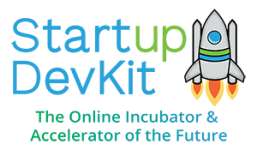

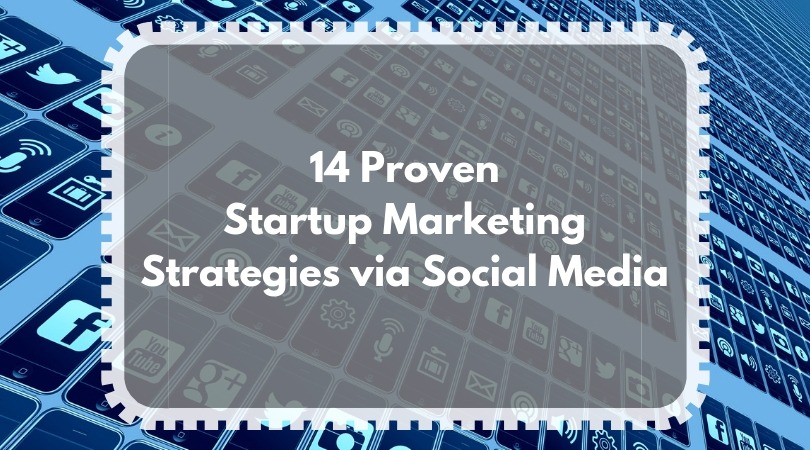
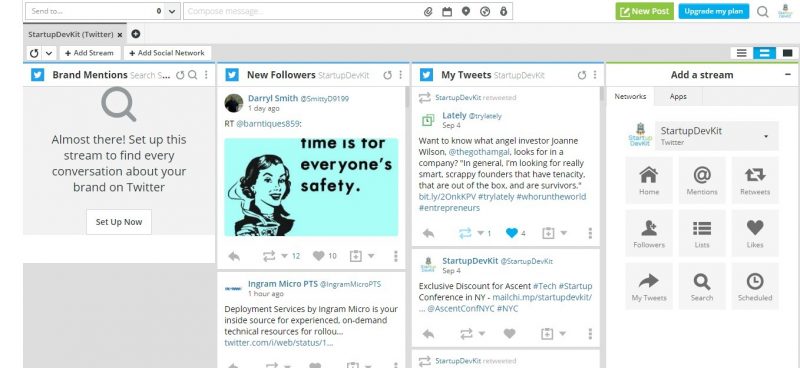


4 Responses
Is posting daily recommended for Facebook because I have read that the Facebook algorithms are designed in such a manner that if people don’t engage with your posts, your organic reach will go down?
Wouldn’t it be better to post only high quality content, even if you post it twice a week?
Thanks for commenting Vishaka. I understand where you’re coming from. Posting daily is still recommended so you can keep your audience engaged and be on the top of their minds. While the Facebook algorithm is indeed designed so that when people don’t interact then the posts will go down in organic reach, it’s still important to show that consistency and show your face.
While posting high-quality content is important, it doesn’t need to be original.
– You can copy and paste high-quality text from an article you found and tag other people in your post to get more engagement.
– You can ask your audience questions to spur engagement.
– You can use polls to find out what type of content your audience might engage with more.
– You can even post links to external blog posts of awesome content you found and say why you liked it so much to give your audience some insight.
Either way, you’re providing value to your audience, and that’s the goal.
So in this case, less doesn’t equal more. The idea behind posting high-quality content less often rather than a higher quantity of medium to low-quality content is more geared towards publishing actual content.
Does that make sense to you?
I appreciate such factual information on promoting your brand or company using Social Media Marketing. I like how you have also explained how we could use some tools for promotion, like Hootsuite, Buffer & Lately. Keep up the good work.
As a social media enthusiast, I have always been fascinated by the impact of social media on businesses. From personal experience, I have seen firsthand how a well-crafted social media strategy can help a small business grow and expand its reach.